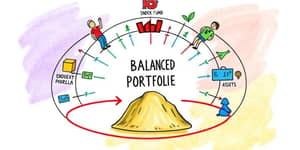
In today’s unpredictable global markets, sticking solely to stocks and bonds can leave investors exposed to sudden downturns and diminishing yields. By expanding into alternative assets, you can build a portfolio that not only weathers volatility but also captures unique growth opportunities. This article guides you through understanding, selecting, and integrating these nontraditional investments to craft a robust strategy.
Alternative investments encompass financial assets that fall outside the traditional equity and bond markets. These include private equity, real estate, hedge funds, commodities, infrastructure, and even digital assets like cryptocurrencies. What sets them apart is their low correlation with traditional asset classes, meaning they often respond differently to economic forces and market swings.
In practice, this diversification benefit plays a crucial role when equities tumble or interest rates spike. By blending these alternatives with conventional holdings, investors can strive for a smoother return profile and enhanced risk management over the long term.
Below is a concise overview of leading alternative asset classes, highlighting their key features and considerations:
Adding alternative assets can offer investors several compelling advantages:
Start by assessing your overall risk tolerance, investment horizon, and liquidity needs. Industry guidelines often suggest allocating 15–25% of your portfolio to alternatives, though the precise mix depends on individual goals.
Many advisors now integrate private equity within the equity sleeve, while others create a separate “alts” bucket. Regardless, ensure each selection aligns with your broader strategy, whether you seek inflation protection via real assets or high-growth potential through venture capital.
No investment is without downsides, and alternatives present unique challenges that require careful planning and due diligence:
Traditional 60/40 portfolios have struggled to meet modern objectives amid persistent inflation and low bond yields. As a result, individual investors now have unprecedented access to alternatives through online platforms and regulated vehicles previously reserved for institutions.
This democratization comes with both opportunity and responsibility. With greater accessibility, you can tailor a multifaceted portfolio—but you must also stay informed and seek professional guidance when needed to navigate complexity.
Implementing alternative assets effectively involves a disciplined process:
By thoughtfully integrating alternative assets, you can build a portfolio that not only endures turbulent markets but also captures opportunities beyond public markets. Whether you pursue real estate income, private equity growth, or the stability of infrastructure, each component adds a unique layer of resilience.
Remember that successful diversification is more than a checklist—it’s an ongoing journey that demands continual learning, disciplined execution, and a readiness to adapt as markets evolve. Embrace the potential of alternatives to construct a more robust, future-focused investment strategy.
References













